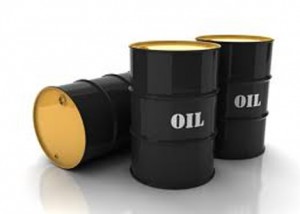Ghana oil Heritage Fund accumulates about $500m – PIAC
 Ghana’s oil revenue inflow into the Heritage Fund has reached $485,172,436.04 as at 2018, seven years after the country commenced commercial production of crude oil.
Ghana’s oil revenue inflow into the Heritage Fund has reached $485,172,436.04 as at 2018, seven years after the country commenced commercial production of crude oil.
The nation’s Petroleum Revenue Management Act (PRMA) 2011, set the Ghana Heritage Fund to save oil revenues for future generations of Ghanaians.
But, the closing amount in the Ghana Stabilization Fund as at the end of 2018 was $381.20 million, a report by the Public Interest and Accountability Committee (PIAC) has revealed.
The Stabilization Fund rather seeks to mitigate the negative effects of oil revenue volatility on the national budget, and sustain public expenditure capacity in the unanticipated event of a revenue shortfall.
Speaking at a public forum to disseminate the 2018 annual report on the management and use of oil revenues held at Techiman in the Bono East Region, Dr Steve Manteaw, Chairman of PIAC said Ghana’s oil production had seen some improvements.
He observed that the Stabilization Fund was largely not serving the purpose for which it was envisioned under the PRMA.
The country’s total crude oil production from the three producing fields – Jubilee, TEN and Sankofa Gye Nyame (SGN) jumped from 58,658,063.54 barrels in 2017 to 62,135,435.07 barrels in 2018.
Of the total outputs, Jubilee field produced 28,461,755 barrels, TEN field 23,557,361 barrels and SGN field 10,751,671 barrels.
Dr Manteaw said a total of $977,093,285 accrued to the Petroleum Holding Fund from Royalties, Carried and Participating Interest, Corporate Income Taxes and Surface Rentals.
He said the 2018 revenue constituted about a quarter of total receipts from 2011-2017, indicating the increased revenue, was mainly due to drilling of more TEN wells, crude price rebound on the international market and the coming on stream of SGN Field production.
Dr Manteaw expressed concern about the country’s over-reliance on the oil revenue to fund the free Senior High School Programme and called on the government to look for other alternative ways to augment funding to sustain the implementation of that laudable flagship educational programme.
Last year, he said an amount of GH¢419, 871.012.44 representing an increase of 107.47 per cent over that of 2017 was channelled into physical infrastructure and service delivery in education.
The distribution to education in 2018 to the free SHS programme (goods and services) was 98.75 per cent while 125 per cent was on educational infrastructural facilities (public investment expenditure).
Source: GNA
